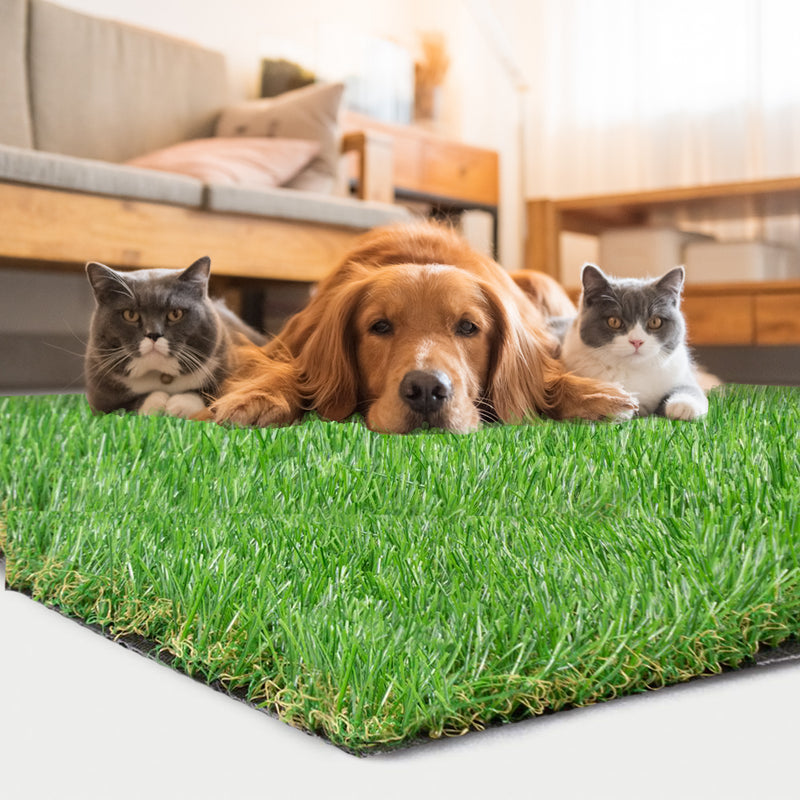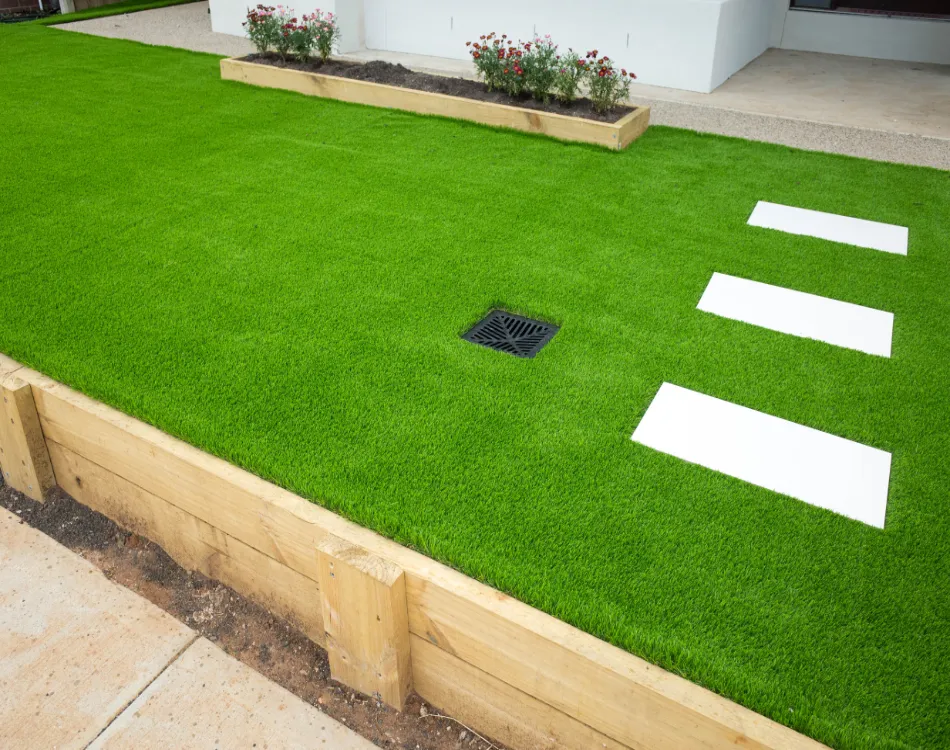Look Into the Environmental Conveniences of Opting for Artificial Lawn Solutions
The fostering of fabricated lawn options offers an engaging opportunity to deal with pressing environmental obstacles. By significantly lowering water use and decreasing the application of damaging chemicals, these alternatives not just promote lasting landscape design but additionally shield local environments.
Water Conservation Advantages
Among one of the most substantial benefits of synthetic grass is its ability to save water. Typical grass yards require significant watering, especially in locations susceptible to drought or water constraints. In contrast, artificial grass does not need watering, considerably reducing the total demand for water resources. This function is specifically advantageous in deserts where water deficiency is a pressing concern.
By removing the requirement for regular watering, synthetic grass contributes to sustainable landscape practices and aids alleviate the environmental impact of excessive water usage. The preservation of water extends to the decrease of drainage, which can lead to dirt erosion and river pollution.
Furthermore, the setup of synthetic grass allows communities and homeowners to allocate water resources more efficiently, concentrating on important usages such as drinking water and agriculture. The shift in the direction of fabricated turf not just advertises accountable water usage but additionally lines up with wider environmental goals aimed at protecting natural sources.
As neighborhoods progressively prioritize sustainability, the water preservation advantages of fabricated turf provide a compelling case for its adoption in commercial and domestic landscape design jobs.
Minimized Chemical Usage
The change to man-made lawn considerably decreases the dependence on chemical therapies commonly utilized in all-natural grass maintenance. Traditional grass monitoring generally includes the application of pesticides, fertilizers, and herbicides to promote development and control pests. These chemicals can present dangers to human health, local wildlife, and the setting, adding to soil and water contamination.
In contrast, synthetic grass removes the requirement for these harmful compounds. Once mounted, it requires marginal maintenance, largely containing regular cleansing and occasional infill replenishment. This reduction in chemical use not only profits the immediate atmosphere however likewise adds to more comprehensive environmental security. By reducing the launch of synthetic substances into the ecological community, man-made turf advertises much healthier soil and water supply.
In addition, the lack of chemical runoff connected with synthetic grass installations helps safeguard regional rivers from air pollution, sustaining water life and keeping biodiversity. Turf installation phoenix az. As neighborhoods progressively prioritize lasting methods, selecting synthetic grass presents a feasible option that straightens with environmental conservation objectives. With this shift, residential or commercial property owners can appreciate rich eco-friendly rooms without endangering eco-friendly health and wellness, paving the means for a more lasting future
Lower Carbon Footprint

In addition, the installment of synthetic grass can result in significant water preservation. All-natural yards require substantial quantities of water for watering, which not only includes in the carbon impact linked with water extraction and treatment however additionally strains neighborhood water sources. On the other hand, synthetic grass requires marginal upkeep, needing no watering, therefore significantly minimizing water use and its connected energy costs.
In addition, the longevity of man-made turf adds to its decreased carbon impact. With a life expectancy of as much as 15 years or even more, the demand for regular substitutes is decreased, resulting in much less waste and lower energy intake in production and disposing of typical grass options. Generally, synthetic grass provides a sustainable option for ecologically mindful landscape design.
Environment Preservation
Environment conservation is a critical factor to consider in the dispute over landscaping selections, specifically when contrasting synthetic turf to all-natural lawn. Natural yard lawns typically require extensive maintenance, including making use of herbicides, chemicals, and plant foods, which can adversely influence local communities. These chemicals can seep into the dirt and waterways, hurting native flora and animals and disrupting neighborhood environments.
Synthetic lawn eliminates the need for unsafe chemicals, thereby safeguarding close-by wildlife and preserving the honesty of surrounding ecological visit communities. The installment of fabricated lawn can lead to the conversion of previous lawn locations into more biodiverse landscapes, such as pollinator gardens or native plant locations, which can sustain neighborhood wild animals.
Inevitably, the change to man-made lawn not just saves water and minimizes maintenance initiatives yet likewise fosters a much more unified partnership between human tasks and the natural surroundings, advertising habitat preservation at the same time.
Long-Term Sustainability
Long-lasting sustainability is an essential element in evaluating the benefits of man-made grass over traditional yard yards. One of one of the most substantial benefits of synthetic grass is its sturdiness; it can last as much as 15-20 years with minimal upkeep, whereas natural yard needs frequent reseeding and substitute. This longevity reduces the demand for constant sources, such as water, plant foods, and chemicals, which are important for maintaining a healthy and balanced grass yard.
Furthermore, synthetic lawn adds to a decrease in carbon discharges related to yard care devices. Traditional lawns frequently require gas-powered lawn mowers, trimmers, and blowers, every one of which contribute to air contamination. Arizona artificial turf. In comparison, synthetic grass removes the need for such devices, advertising a cleaner environment
Moreover, the production of synthetic grass significantly uses recycled materials, improving its sustainability account. As producers adopt environment-friendly methods, the environmental footprint of synthetic grass continues to diminish.

Verdict
The adoption of synthetic grass remedies offers considerable environmental benefits, consisting of considerable water conservation, reduced dependence on dangerous chemicals, and a lower carbon impact. In addition, synthetic grass help in maintaining all-natural habitats by lessening land disruption and advertising lasting sustainability through using long lasting materials. click reference Jointly, these elements underscore the potential of synthetic grass to contribute favorably to ecological health and wellness and offer a sensible choice to typical landscape design methods in a significantly resource-conscious world.
In contrast, artificial grass does not require watering, substantially minimizing the total demand for water resources. By decreasing the release of artificial compounds right into the environment, synthetic grass promotes much healthier dirt and water systems.
Moreover, the setup of synthetic turf can result in substantial useful content water conservation. In contrast, man-made lawn needs minimal maintenance, requiring no watering, consequently dramatically minimizing water usage and its linked power costs.

Comments on “Upgrade Your Outdoor Space with Arizona Artificial Turf for a Lush Green Look”